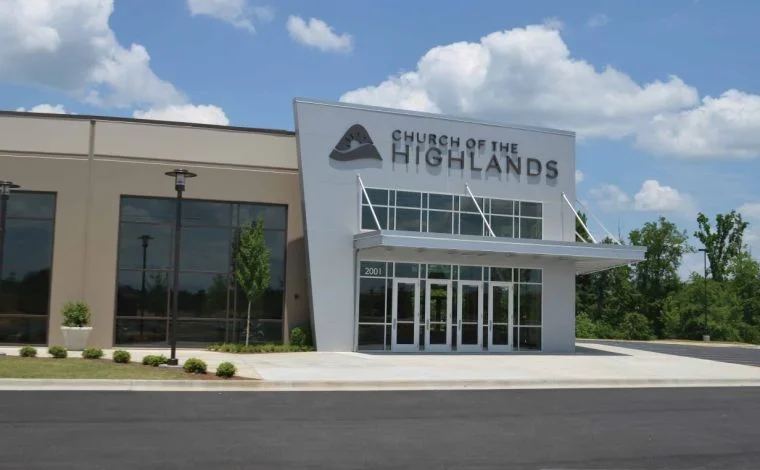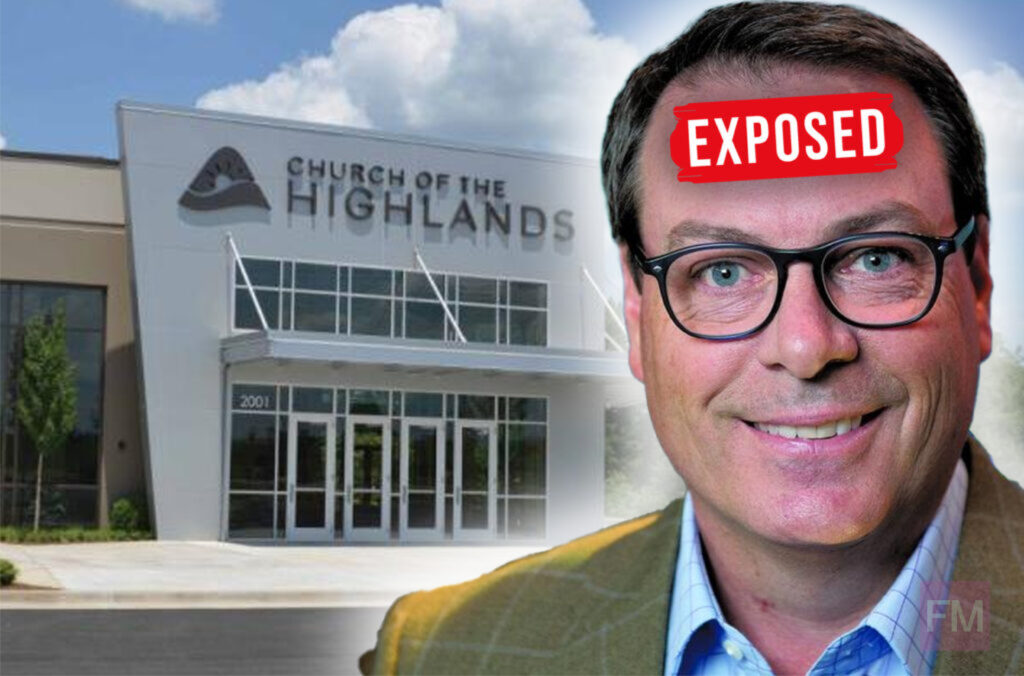Church of the Highlands Exposed: Unveiling the Truth Behind the Megachurch Phenomenon

1. Introduction to the Church of the Highlands
Church of the Highlands Exposed, founded in 2001 in Birmingham, Alabama, has emerged as one of the most influential megachurches in the United States. Established by Pastor Chris Hodges and a small group of dedicated followers, the church began with a vision to create a welcoming and engaging environment for spiritual growth. Over the years, it has transformed from a modest congregation meeting in a school gymnasium to a multi-campus church with tens of thousands of attendees every week. Its rapid growth reflects not only the appeal of its message but also the effective use of modern communication tools.
At the heart of the church’s success is its commitment to community and outreach. The Church of the Highlands emphasizes building relationships, both within the congregation and in the wider community. This approach has led to numerous programs aimed at assisting local residents, providing a sense of belonging that resonates with many. With its engaging worship services, dynamic preaching, and vibrant community events, the church of the highlands exposed has attracted a diverse congregation, including families, young professionals, and individuals seeking spiritual fulfillment.
Despite its popularity, the Church of the Highlands is not without its controversies. As the church continues to expand, questions have arisen regarding its practices, financial transparency, and the impact it has on its members and the surrounding community. This article seeks to expose the truth behind the Church of the Highlands, examining its beliefs, controversies, and overall influence.
2. Beliefs and Practices
The Church of the Highlands is rooted in evangelical Christian beliefs, emphasizing a personal relationship with Jesus Christ. The church’s teachings draw heavily from the Bible, with a focus on grace, faith, and the importance of community. The church identifies itself as a non-denominational Christian organization, welcoming individuals from various backgrounds and denominations to join its services. This inclusive approach is designed to make everyone feel at home, regardless of their previous church experience.
Worship at the Church of the Highlands is characterized by contemporary music, engaging sermons, and a welcoming atmosphere. Services typically feature a mix of modern worship songs and traditional hymns, creating an uplifting experience that resonates with many attendees. The church also places a strong emphasis on small groups, which provide opportunities for members to connect on a deeper level and explore their faith together. These groups encourage discussions, prayer, and fellowship, fostering a sense of belonging within the larger congregation.
In addition to regular worship services, the Church of the Highlands is known for its community outreach programs. These initiatives include food drives, educational programs, and support for those facing life challenges. The church’s commitment to serving the community reflects its core belief in the importance of living out one’s faith through action. This focus on service has contributed to its positive reputation and strengthened its ties within the local area, demonstrating the church’s dedication to making a meaningful impact.

3. Controversies and Criticisms
Despite its successes, the Church of the Highlands has faced various controversies and criticisms over the years. One of the most significant concerns revolves around financial transparency. Critics have raised questions about how the church allocates its resources, particularly given its substantial income from tithes and donations. Some former members have claimed that the church prioritizes expansion over community needs, suggesting a lack of accountability in financial matters. These allegations have led to calls for more openness regarding the church’s financial operations.
In addition to financial concerns, some critics have labeled the Church of the Highlands as having cult-like tendencies. Detractors argue that the church’s charismatic leadership and strong emphasis on loyalty can create an environment where dissenting opinions are discouraged. Former members have shared experiences of feeling pressured to conform to the church’s culture and beliefs, raising questions about individual freedom and autonomy within the congregation. These claims have sparked debate about the nature of community within the church and how it balances unity with diversity of thought.
The leadership of the Church of the Highlands has consistently addressed these criticisms, emphasizing its commitment to accountability and community engagement. Church officials have stated that they are dedicated to being transparent about their operations and are actively working to ensure that members feel valued and heard. However, the ongoing dialogue surrounding these issues highlights the complexities inherent in large organizations and the importance of addressing concerns raised by both current and former members.
4. The Impact on Members and Community
The impact of the Church of the Highlands extends beyond its weekly services, significantly influencing the lives of its members and the surrounding community. Testimonials from both current and former members reveal a range of experiences, from positive transformations in personal faith to feelings of disillusionment. Many attendees credit the church with providing a supportive environment where they found healing, guidance, and community. For some, the church has been a source of strength during difficult times, offering resources and a sense of belonging.
On the flip side, some former members have expressed feelings of isolation or pressure to conform to the church’s expectations. They describe experiences where dissenting views were not well-received, leading to a sense of alienation. This dichotomy reflects the complex relationship individuals have with large organizations, especially those that play a significant role in their spiritual lives. The church’s growth has created a vast network of connections, but it has also brought challenges related to maintaining individual voices within a larger collective.
In terms of community impact, the Church of the Highlands has initiated numerous programs aimed at addressing local needs. From food pantries to educational workshops, the church actively engages with the surrounding population. This commitment to community service has helped foster positive relationships with local residents, enhancing the church’s reputation as a force for good. However, the effectiveness of these programs and their alignment with the church’s core mission continue to be subjects of discussion among both supporters and critics.
5. The Role of Technology and Media
In an age where digital presence is paramount, the Church of the Highlands has leveraged technology to enhance its outreach and engagement. The church utilizes modern communication tools, such as live streaming services and social media platforms, to connect with a broader audience. This approach has proven particularly beneficial during the COVID-19 pandemic, when in-person gatherings were restricted. The transition to virtual services allowed the church to maintain its connection with members and reach new audiences.
The church’s social media strategy includes regular updates, inspirational messages, and community highlights, fostering a sense of connection among members. By utilizing these platforms, the Church of the Highlands effectively communicates its values, upcoming events, and outreach initiatives, encouraging engagement both online and offline. This dynamic presence enables the church to adapt to changing societal needs and preferences, maintaining relevance in a fast-paced world.
Moreover, technology plays a significant role in the church’s worship services. From high-quality sound systems to visually engaging presentations, the church strives to create an immersive worship experience. This modern approach appeals to younger generations and enhances the overall atmosphere during services. However, some critics argue that an overreliance on technology may detract from the spiritual experience, raising questions about the balance between modernity and tradition in worship.
6. Future of the Church of the Highlands
As the Church of the Highlands continues to grow, its future remains a topic of interest for both supporters and critics. The trend of megachurches is on the rise, but sustainability remains a key concern. The church will need to navigate challenges related to maintaining its core values while expanding its reach. Ensuring that the church remains a welcoming space for diverse perspectives will be crucial for its long-term viability.
Leadership changes can also significantly impact the direction of the Church of the Highlands. As Pastor Chris Hodges continues to guide the church, the potential for succession planning and the development of new leaders will be vital. This evolution can either strengthen the church’s mission or lead to shifts that might not align with its foundational principles. Engaging the congregation in discussions about the church’s future can foster a sense of ownership and collective purpose.
Predictions for the church’s influence within the broader faith community suggest that it will continue to be a significant player in shaping modern evangelicalism. As society evolves, the Church of the Highlands will need to adapt to new cultural and social dynamics while staying true to its mission. The ability to embrace change while maintaining its core beliefs will be crucial in defining its role in the years to come.
7. Conclusion
The Church of the Highlands stands as a prominent example of the megachurch phenomenon, offering both inspiration and controversy. Its rapid growth reflects the desire for community and spiritual fulfillment in today’s society. While the church has made significant contributions to its members and the wider community, it is also important to acknowledge the criticisms and challenges it faces.
As we delve deeper into the complexities of this influential institution, it becomes clear that the Church of the Highlands embodies both the potential for positive change and the challenges of maintaining accountability. For those considering membership or involvement, it is crucial to approach with an informed perspective, recognizing both the strengths and weaknesses of the community.
Ultimately, the Church of the Highlands represents a unique blend of modern faith, community engagement, and ongoing debate. Understanding its impact requires a nuanced view that encompasses both its successes and the legitimate concerns raised by its critics.


